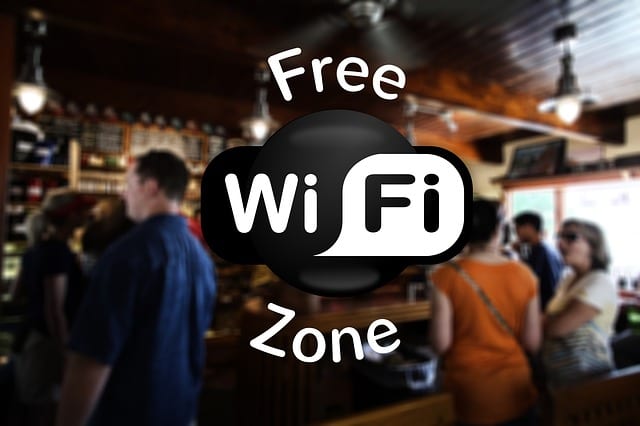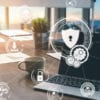Public internet access is a boon to users who can’t afford data roaming services and even 3G/4G connectivity. But while it’s free and convenient to use, it comes with one crucial problem: the inability to provide security to users. Avoid connecting to public Wi-Fi as much as possible. If you must connect, here’s how you can stay secure.
What’s the Big Deal?
The radio waves that transmit between connected devices and the public Wi-Fi router are a treasure trove of information. A hacker can easily intercept these wireless signals and interpret them to collect important data: passwords, confidential conversations, banking transactions, and so on.
Enable Your Antivirus and Firewall
Activating your antivirus and firewall is your first step in protecting your computer. An antivirus removes malicious pieces of software from your device. A firewall lets you manage the flow of traffic that’s coming in and going out of your device, allowing you to authorize or restrict communications as you see fit. Together, these security applications stop malware and hackers from entering your computer and accessing stored data. However, they’re basically useless in protecting data that has already left your device and is being transmitted through the public Wi-Fi. In such case, you need to use HTTPS connections and a VPN, as discussed further below.
Use HTTPS Connections
When you browse regular websites using the unsecured Hypertext Transfer Protocol (HTTP), every transmitted data is readable in plain text. On the other hand, HTTPS (the ‘S’ stands for “secure”) adds a layer of protection to the data. It works with the Secure Sockets Layer (SSL) standard to create an encrypted link that’s unique to a website and your web browser, giving you a secure connection to transmit private data.
You can easily identify a website that utilizes HTTPS by looking at its web address (or URL). If the prefix of the address is “https” (and perhaps accompanied by a green padlock), then your connection to that website is secure. You can enable HTTPS whenever possible by using the free, open-source browser extension called HTTPS Everywhere.
Use a VPN
Whereas HTTPS encrypts traffic between a website and your web browser, a virtual private network (VPN) encrypts all your traffic between your device and the internet. Think of VPN as a secure tunnel or a network within a network. All of your traffic is rerouted to the VPN and becomes strongly encrypted. But while the value of VPN as a layer of protection is huge, it has some downsides. For one, a good VPN usually costs money. For another, browsing the internet through a VPN is usually marginally slower than normal browsing.
Disable Sharing
You most likely have files on your device that you’d rather kept private, which is why you should disable any file and folder sharing features on your device while you’re connected to a public Wi-Fi network. Disable remote logins as well. If these settings are left enabled, hackers can possibly view and interact with the contents of your device.
If you’re using a Windows device, you can disable sharing by going to the Network and Sharing Center of the Control Panel. Find the Advanced Sharing Settings, and make sure the options for sharing and network discovery are off for public networks. If you have a Mac, you can find similar options at the Sharing settings at System Preferences.
Use the Public Wi-Fi for Casual Browsing Only
Public networks are never a safe option for online shopping and banking. Avoid doing these transactions if you can help it. It’s also best that you stay away from websites that require your log-in information. If you must really log in to these sites, make sure the websites use HTTPS.
Watch out for Evil Twins
You may notice at public places that there are multiple Wi-Fi networks having similar names. Some of them could be fake networks posing as legit to help hackers commit man-in-the-middle attacks, in which your device’s outgoing data is rerouted to the hacker first before it reaches its intended destination. Always ask the business proprietor for the exact name of the wireless network to avoid connecting to an evil twin.
Use Two-Factor Authentication (2FA) for Your Accounts
Consider 2FA as a failsafe in the unfortunate event that hackers have stolen your passwords. It adds a layer of security by requiring further identification through another form of credential. Usually, this extra step to the sign-in process is a passcode sent to your mobile number that you must submit before you can enter your account.
Turn off Your Wi-Fi When Not in Use
When you no longer need to access the Internet, turn off your device’s Wi-Fi. This ensures that no data transmission occurs between your device and nearby wireless networks. Follow this tip especially if your device connects automatically to open Wi-Fi networks (and there’s no option to disable this behavior). And as an added bonus, turning off the Wi-Fi might help save battery.
Be Aware of Your Surroundings
Some criminals don’t even bother with software tools to monitor your online activities. They can simply watch you discreetly while you type your passwords, security codes, and PINs. Hackers may even resort to using binoculars and hidden cameras if they’re really dead-set on getting your precious data. Consider using a privacy filter for your device’s screen. This accessory not only minimizes glares and reflections to reduce eye strain but also keeps the content on your screen hidden from prying eyes.
Don’t Forget About Your Device’s Physical Security
We’re talking about using portable devices at public locations, where thieves and snatchers always look for opportunities to steal unattended devices. Naturally, you should never leave your laptop, tablet or smartphone to answer the call of nature or to have a chat with a friend. It should come with you wherever you go. Moreover, make some preparatory measures in anticipation of losing your device. Give the thief a hard time and foil his attempts to access your data by encrypting your hardware. Install tracking software, preferably with a remote wiping feature that you can use if the chances of recovering your stolen device are zero.


